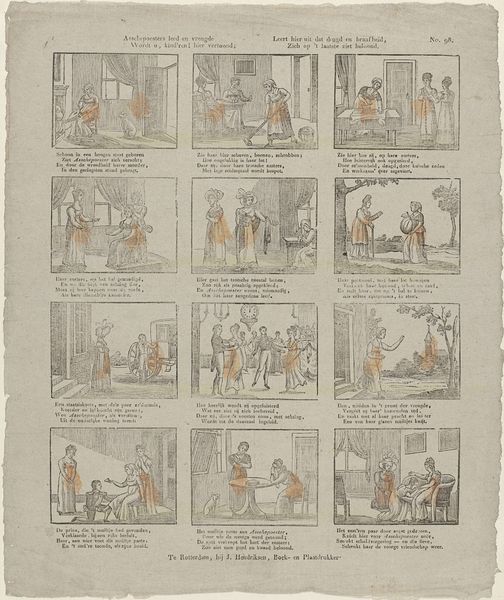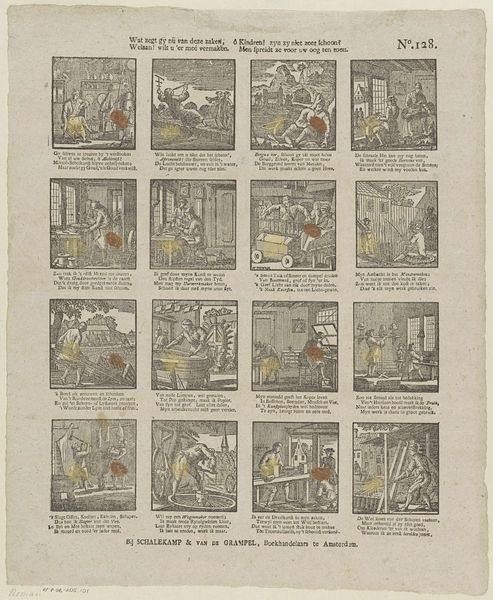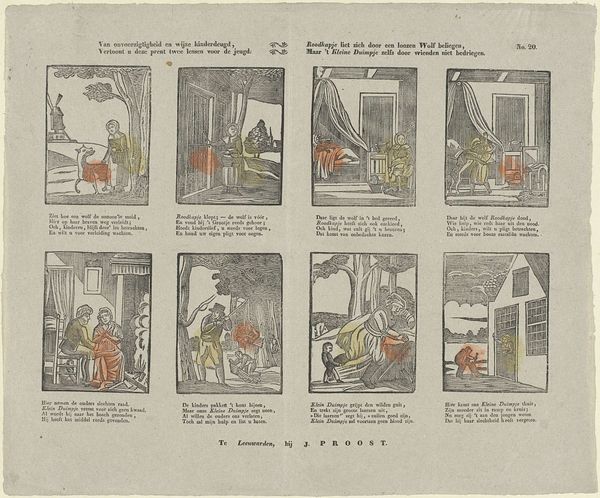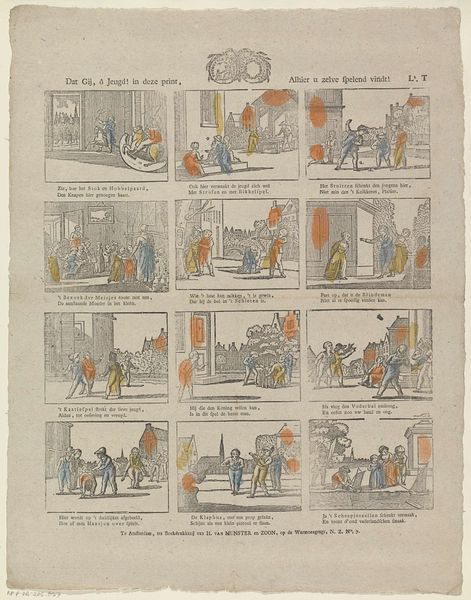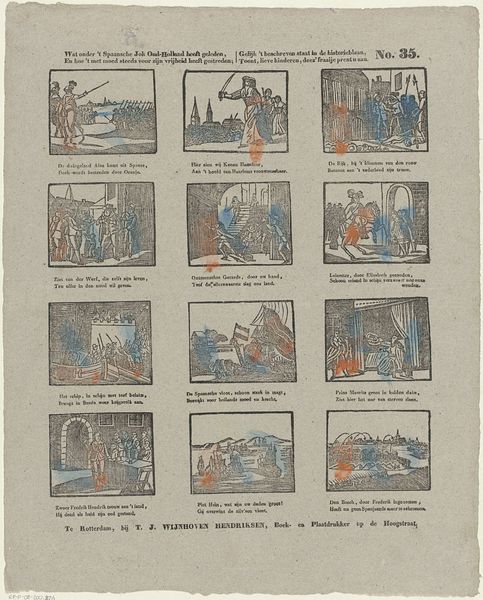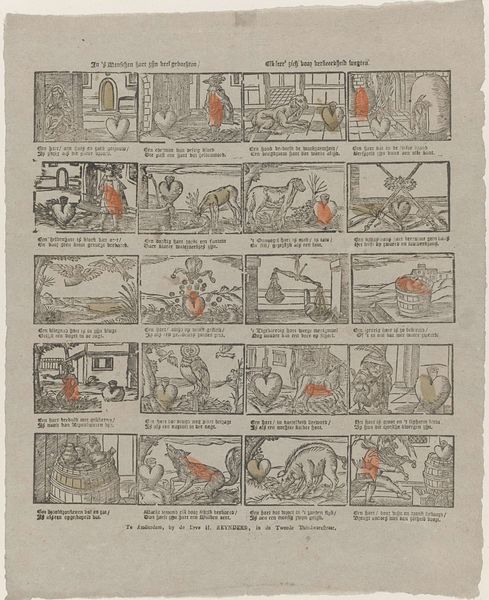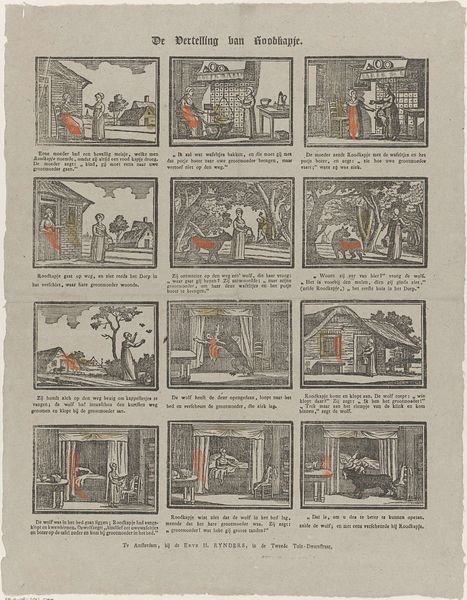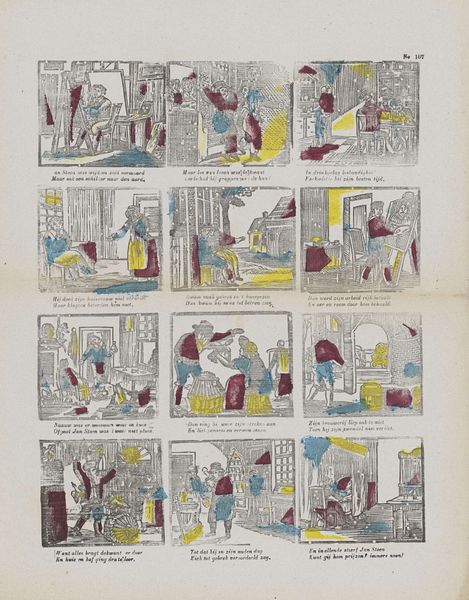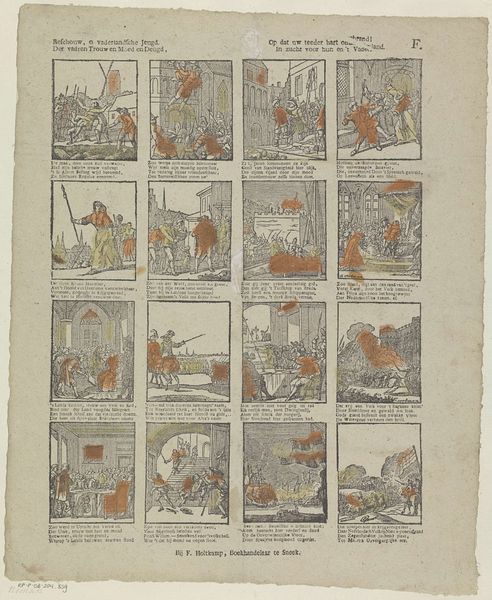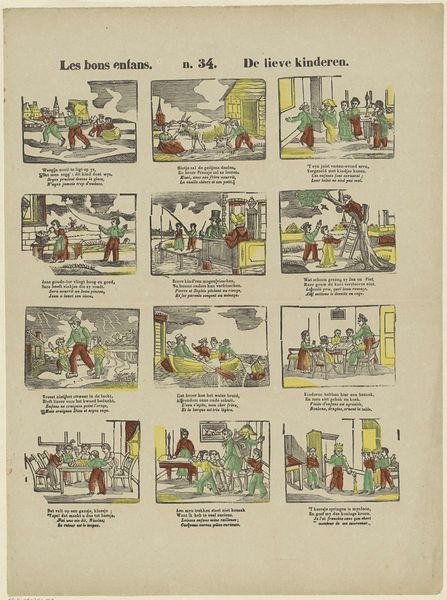
print, engraving
#
narrative-art
# print
#
folk-art
#
history-painting
#
engraving
Dimensions: height 417 mm, width 335 mm
Copyright: Rijks Museum: Open Domain
Curator: Here we have a rather intriguing piece titled "Belgische Revolutie," dating from 1822 to 1849, and it resides here at the Rijksmuseum. It's a print made using engraving techniques, attributed to Schalekamp & Van de Grampel. My first reaction is it feels so fragmented, almost like a comic strip telling a story out of order. Editor: It certainly presents as a sequential narrative, doesn't it? But the choice of medium and reproduction feels deliberate. Engraving implies a process—a meticulous and labor-intensive creation of something that could be widely reproduced, consumed. Was this artwork conceived for a specific, perhaps political purpose? Curator: Absolutely. Given the title and the time frame, it strongly suggests commentary on the Belgian Revolution. But more than a snapshot, it appears to show different scenes to tell a specific historical and social account. It would be very telling to delve more into which scenes the artists decided were relevant. Each one holds ideological importance to understanding the artwork's full intent. Editor: I find the texture compelling, particularly regarding the materiality of each panel. Notice the repetitive crosshatching – an artisanal mark transformed through reproduction. It speaks volumes about printmaking in early 19th-century Amsterdam. Mass production and distribution means that this work would've been seen, handled, and actively engaged with as opposed to simply adored in a museum. I wonder how widely accessible it was. Curator: A crucial point! Considering it uses Dutch text below each scene, it definitely implies a local audience capable of reading and engaging with the narrative. Examining its reception would reveal so much about societal views on the Belgian Revolution in the Netherlands at the time. Perhaps, what ideological purposes are reached? Editor: It all comes down to that process, doesn't it? From conception to its material production to consumption. The choice of medium isn't accidental; it defines how a historical narrative can be understood by those engaging with this artwork. I have a lot to think about now regarding its historical purpose. Curator: I agree! Thank you, it allows me to reflect more on its socio-political context too. It will take lots of investigation to piece together this fractured image of a revolutionary time.
Comments
No comments
Be the first to comment and join the conversation on the ultimate creative platform.
